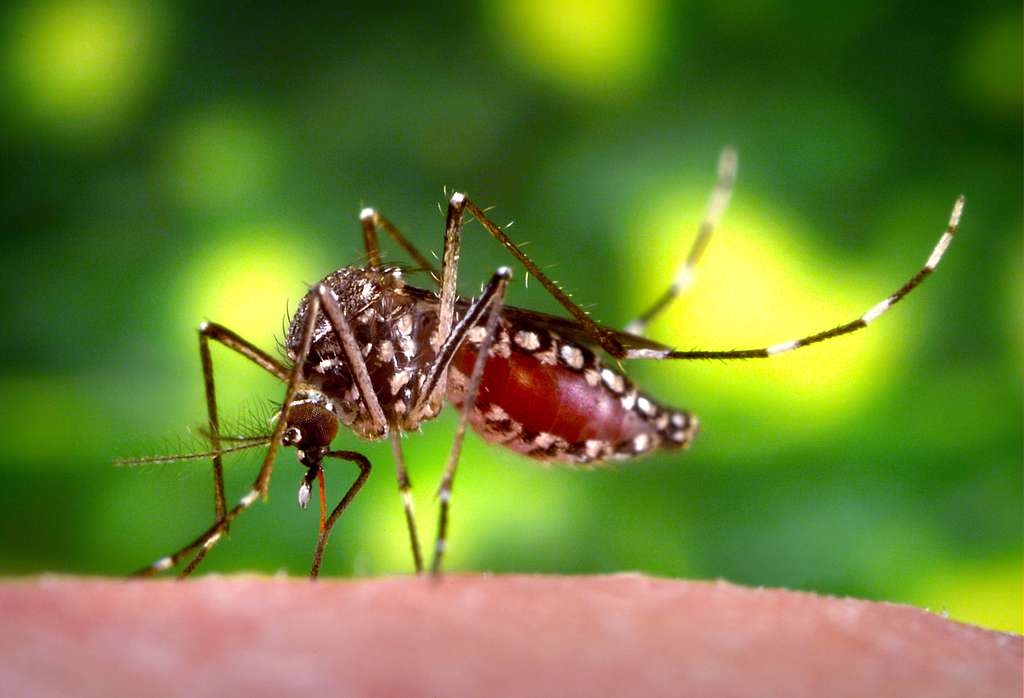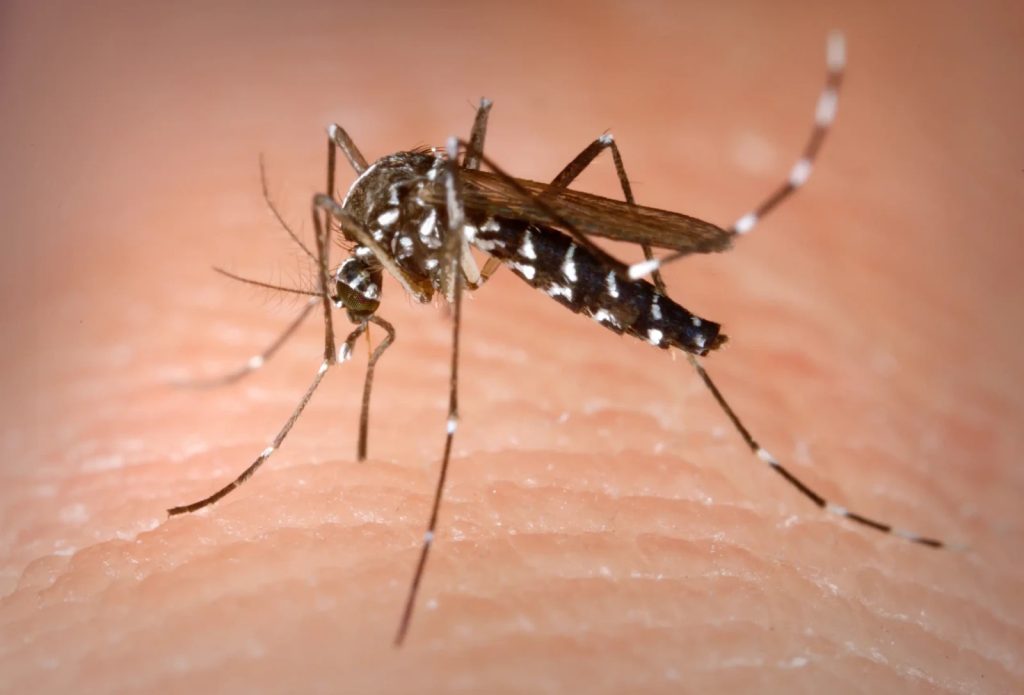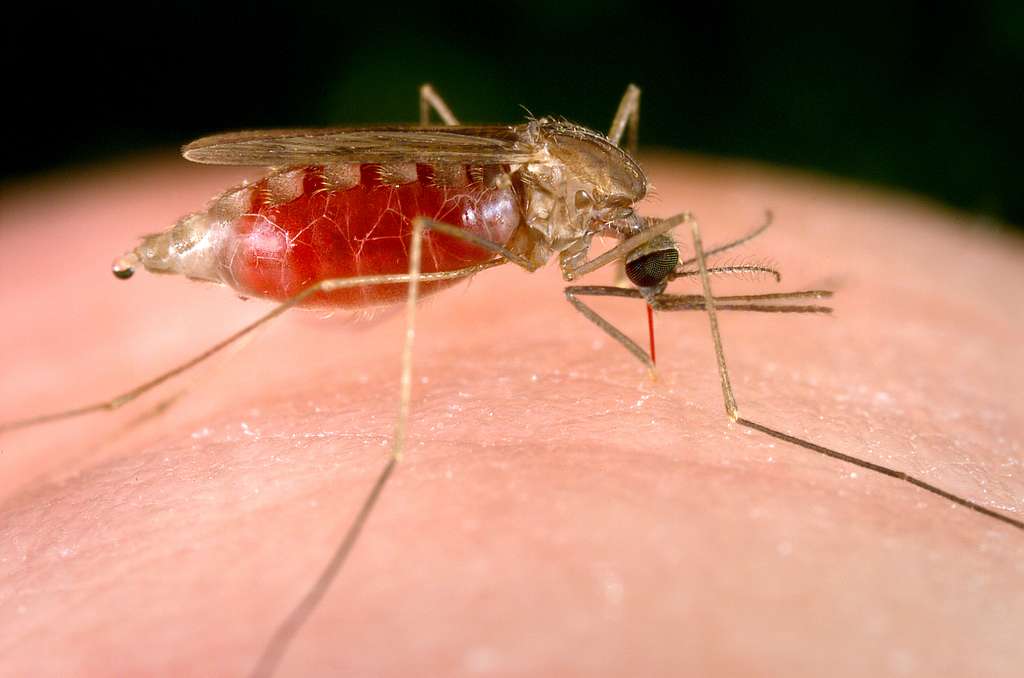Mosquitos
Aedes aegypti, Aedes albopictus, Aedes scutellaris, and Anopheles – all species in genus
Why are mosquitos in Hawaiʻi a problem?
Mosquitoes in Hawaiʻi can transmit diseases to both humans and animals. Some of the most notable diseases for humans being the Zika virus, dengue virus and Chikungunya virus. These diseases can cause very serious illness, persistent problems that last for months, and be particularly harmful for pregnant women. Rarely, they can cause death.
Avian malaria is a deadly disease that affects birds and is spread by mosquitos. A single bite from an infected mosquito can kill a forest bird. Particularly, some of our native honeycreeper birds may be facing imminent extinction from avian malaria, such as the ‘akeke‘e (Hawaiian honeycreeper), ‘ākohekohe (crested honeycreeper), ʻakikiki and kiwikiu. “Biologists studying forest birds unanimously agree that all four species will likely go extinct in the next one to 10 years if something is not done to prevent the spread of avian malaria.” (U.S. Fish and Wildlife Service)
- What You Can Do: Remove, fill or repair areas of standing water larger than a tablespoon around your property. Wear long pants, sleeves and mosquito repellent when exercising outside, especially around dawn to dusk – when mosquitos are most active. Keep mosquito eating fish, such as guppies in ponds, unused pools or other bodies of water that cannot be emptied. Repair broken screens and windows around the home to keep mosquitos out.
Aedes aegypti (yellow fever mosquito)
DISTRIBUTION:
- Has been found on Hawaiʻi Island.
IMPACTS:
- It is a known vector of several viruses including yellow fever virus, dengue virus, Chikungunya virus, and Zika virus.
- They are known as day-biting mosquitos.
- “Because of a short migratory range of only 100-150 yards, their presence at your home usually indicates a nearby
breeding source.” (Vector Control Branch, Hawaii Department of Health) - “Day-biting mosquitoes breed in relatively clean water found in tree holes, plants, rock holes, and all types of manmade containers. They do not breed in ground pools or in water that contains soil.” (Vector Control Branch, Hawaii Department of Health)

Aedes aegypti
Photo credit above: CDC
Aedes albopictus (Asian tiger mosquito)
DISTRIBUTION:
- Aedes albopictus is widely spread throughout the state.
- They are the most common day biting mosquito.
IMPACTS:
- Spreads avian pox, which also has serious impacts on the survival of native Hawaiian forest birds.
- It is a known vector of several viruses including yellow fever virus, dengue virus, Chikungunya virus, and Zika virus.
- “Because of a short migratory range of only 100-150 yards, their presence at your home usually indicates a nearby
breeding source.” (Vector Control Branch, Hawaii Department of Health) - “Day-biting mosquitoes breed in relatively clean water found in tree holes, plants, rock holes, and all types of manmade containers. They do not breed in ground pools or in water that contains soil.” (Vector Control Branch, Hawaii Department of Health)

Aedes albopictus
Photo credit above: James Gathany/CDC
Aedes scutellaris
DISTRIBUTION:
- It is not present in Hawaiʻi. It’s found in Ambon, Aru Islands, Seram, New Guinea.
IMPACTS:
- It is another species that carries the dengue virus.
Anopheles (Western Malaria Mosquito)
DISTRIBUTION:
- These mosquitos live both tropical regions and colder areas. From sub-Saharan Africa to as far north as certain regions of Russia. They have never been detected in Hawaiʻi.
IMPACTS:
- Anopheles mosquitos can transmit malaria to humans. They are the only mosquito genus that carries human malaria.

Anopheles freeborni
Picture credit above: CDC
Culex quinquefasciatus (Southern House Mosquito)
DISTRIBUTION:
- This mosquito was the first introduced to Hawaiʻi. It is abundant on every island.
IMPACTS:
- These mosquitos are the only species in Hawaiʻi that spread avian malaria, a disease that causes illness and death for our native forest birds.
- The female mosquito bites both humans and animals at night. Males do not bite.
- “In addition to spreading avian diseases, the southern house mosquito can also transmit deadly human diseases like West Nile Virus, Western encephalitis, and St. Louis encephalitis as well as other animal diseases–it is the primary vector of dog heartworm. Luckily, these human diseases are not present in Hawai’i.” (Birds, Not Mosquitoes)

Culex quinquefasciatus
Photo credit above: James Gathany/CDC
ERADICATION & CONTROL METHODS:
- Eradicating breeding sites is an effective method for reducing mosquito populations. “Common breeding sites are in water found in old tires, clogged roof gutters, cans, bottles, unused swimming pools, unused fish ponds, pineapple lilies (bromeliads), hollow bamboo stumps, hollow tree stumps, uncapped hollow tile walls, uncapped fence pipes, and overflow trays under house plants.” (Vector Control Branch, Hawaii Department of Health)
- Remove, empty or fill breeding spots to decrease populations.
- “Use mosquito-eating fish, such as guppies, in fish ponds, unused swimming pools, or other large containers that cannot be removed or emptied.” (Vector Control Branch, Hawaii Department of Health)
- “Eliminate adult mosquitoes with aerosol insecticide labeled for flying insects.” (Vector Control Branch, Hawaii Department of Health)
- “Use insecticides specifically labeled for controlling mosquito larvae in breeding sites that cannot be emptied or removed. Consult your garden shop or a chemical company for available insecticides.” (Vector Control Branch, Hawaii Department of Health)
WHAT YOU CAN DO:
- Protect yourself from bites with long sleeves, pants, and insect repellant.
- Repair, or install screens on windows and doors.
- Check around your house and remove areas with standing water at least once a week, this applies to anything that can hold 1 tablespoon of water.
- Wear repellent when exercising outside, especially around dusk and dawn.
- Mosquito Program – Vector Control Branch, Hawaii Department of Health
- Mosquitoes – Vector Control Branch, Hawaii Department of Health
- Mosquito-Transmitted Diseases – State of Hawaii, Department of Health
- Zika Virus – State of Hawaii, Department of Health
- Dengue – State of Hawaii, Department of Health
- Chikungunya – State of Hawaii, Department of Health
- Birds, Not Mosquitoes
- Saving Hawaii’s Forest Birds – U.S. Fish & Wildlife Service